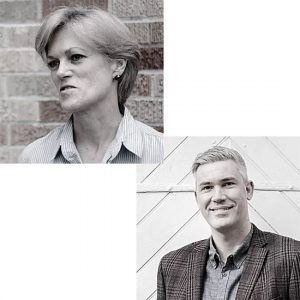 By Ann J. Shackelford, Senior Consultant, and Steve W. Waiksnoris, Senior Consultant, Arthur Alley.
By Ann J. Shackelford, Senior Consultant, and Steve W. Waiksnoris, Senior Consultant, Arthur Alley.
I was recently with a group of board members, staff and other stakeholders of a human services organization. They had contracted our firm to perform a community needs assessment and strategic plan, and this was the day we were going to present and review the findings. The full report had been sent out in advance so that all could come prepared to discuss.
While waiting for our turn to speak, I noticed one of the attendees take out their checkbook and carefully begin filling out a check. Of course I wasn’t sure what it was for, but I did know that this person is a prominent philanthropist in the town we were visiting, so I hoped it was a gift for our client’s work.
When it was our turn on the agenda, I began the presentation with a bit of background on these types of studies and why they are done. I’ll share a few of those thoughts here.
When you’re working in your non-profit day in and day out, it’s easy to get into a mode where it’s simply business as usual. That’s not necessarily a bad thing, as you are doing the work and continue to be passionate about your cause. You continue to make an impact on your community. Things change for good because of the work you’ve been doing.
But at a certain point along the way, the community may have changed right under your nose. The needs may have increased, decreased, or changed entirely, but you’ve missed the shift while focused on the good things you’ve always been doing.
A community needs assessment is a way for an organization to take an honest look at their operating environment and to confirm that what they are doing is truly needed.
In a nutshell, such a process, whether conducted internally or with the assistance of a consultant, can combine objective research and anecdotal remarks to come up with a series of observations, conclusions, and recommendations. Your organization can use the recommendations to chart a course for more effective service moving forward.
But let’s get back to our client presentation . . . . We reviewed the completed report and had a good discussion about how the client could meet some of the observed community needs and recommended strategies to do so.
It’s at this point that a planning study can also provide a solid foundation for future fundraising activity. When you can prove to your funders that there’s a real need, and that you’ve thoughtfully developed a strategy to address that need, you can build a solid case for their investment in you.
In the instance of our client and their friend with the checkbook, they have known each other for years. They’ve communicated a perceived need and had even asked the donor to support it. Because their relationship is built on trust and respect, the donor had pledged that they would support the planned project. But it wasn’t until they were able to review the facts and findings of the planning study that they felt it was time to make the gift. Once satisfied with the plan, it was time to take out the checkbook…and make a seven-figure donation!
The gift was a great jump-start to helping our client address identified community needs, and added even more credibility to the fundraising effort that will follow.
This is a real life illustration of the importance of planning on future impact. Take the time to tune in to your community needs, find your place in that landscape and articulate how you will make a difference. The money will follow.
About Arthur Alley
Your organization’s development/fundraising goals are unique – they require a custom approach. Arthur Alley works as an extension of your team to create and implement thoughtful, effective strategies focused on success. Whether your goal is to identify emerging community needs, to build your fundraising potential, or to implement a fundraising campaign, Arthur Alley has the experience, insight and commitment to ensure you achieve your goals.
Learn more at www.arthuralley.com


